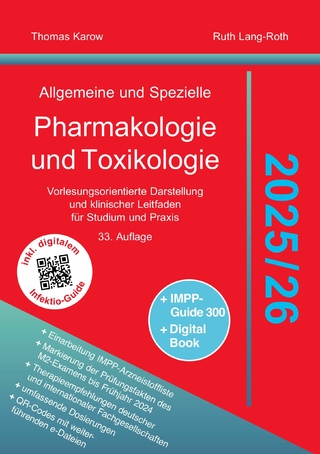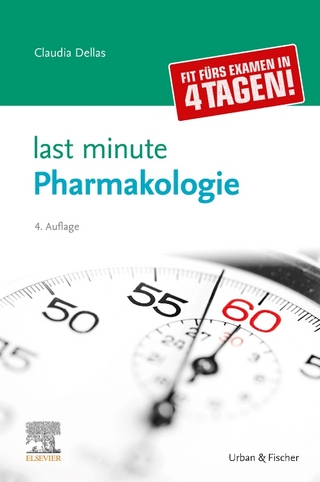
"Venomous" Bites from "Non-Venomous" Snakes
Elsevier Science Publishing Co Inc (Verlag)
978-0-12-822786-2 (ISBN)
The first edition of this book provided "one-stop shopping" by offering information regarding their possible toxicity and clinical relevance as well as recommendations for medical management of their bites. The second edition expands and updates the content with detailed information about the effects and medical management of bites by a broad representation of non–front-fanged species. The hypothetical venomous nature of some lizards considered as non-venomous such as the Komodo monitor or dragon and their allies, as well as the medical effects of their bites, is also examined. The dynamic taxonomy of advanced snakes is updated, and the bases for some of these fluid changes are discussed. Likewise, terminology is also updated in order to reflect the ongoing debates regarding the definition of "venom" and the balanced reinforcement of nonmedical criteria used to define the biological basis of the term "venomous."
Dr. Scott A. Weinstein is a clinical toxinologist, venom researcher, and family physician. His academic training includes general and field herpetology, medical microbiology/immunology, biomedical sciences and comparative religion. His experience includes: treating snakebites and marine envenoming, as well as poisonous ingestions; characterization of aberrant toxins present in snake venoms; isolation of antimicrobial components of venoms; pharmacological studies of venom toxins in the rat blood-brain-barrier model and iontophoretic investigations, and antigenic relationships among venoms and secretions/blood of non-front-fanged snakes. He is a faculty member of the recurring Marine Animals and Snakebite Management symposia (Kuala Lumpur, Malaysia, Bangkok, Thailand and Yogyakarta, Indonesia) and is also a practicing family physician. He has contributed more than 100 peer-reviewed journal papers, and 4 books in toxinology, herpetology and clinical medicine. He is currently clinical toxinologist at the Women’s and Children’s Hospital, Adelaide, Assoc. Professor with the University of Adelaide School of Medicine, and Fellow of the American Academy of Family Physicians. Professor David Alan Warrell is Emeritus Professor of Tropical Medicine and Honorary Fellow of St Cross College, University of Oxford, UK. After training at Oxford, St Thomas’ Hospital and the Royal Postgraduate Medical School in London, he lived, worked, researched and travelled in Ethiopia, Nigeria, Kenya, South Africa, Thailand, Burma, Sri Lanka, Bangladesh, Papua New Guinea, Brazil, Ecuador, Peru and other tropical countries, founding the Oxford University-based Tropical Medicine Research Program whose units study malaria and other major tropical diseases. He became Director of the Oxford Topical Network in 1986, and later Head of The Nuffield Department of Clinical Medicine, University of Oxford. He has published more than 400 research papers, articles, reviews and textbook chapters. He is a consultant to the World Health Organization on snake bites, rabies and malaria; the British Army, UK Medical Research Council, Foreign and Commonwealth Office, Earth Watch International (conservation), Zoological Society of London, Royal Geographical Society and ToxBase UK. He also served as the past President of the Royal Society of Tropical Medicine and Hygiene, and International Federation for Tropical Medicine. His principal research interest remains the pathophysiology and treatment of envenoming. In November 2010, David Warrell was awarded the William Osler Memorial Medal by the Universty of Oxford, and was recently (September 2019) awarded the Sir Patrick Manson Medal, the highest honor awarded by the Royal Society of Tropical Medicine and Hygiene. Dr. Keyler is Co-Director of Toxicology Research with the Minneapolis Medical Research Foundation. He is an Emeritus Professor (Department of Experimental & Clinical Pharmacology with the University of Minnesota, College of Pharmacy) and has authored numerous publications in peer-reviewed journals. He has also authored multiple book chapters involving immunotherapeutics, animal toxins, venomous snakebite, and the medical management of snakebite victims. He has been actively involved with venomous snakes for over 40 years. The medical treatment of venomous snakebites has been a significant component of his professional career, and he has been involved in the medical treatment of over 250 venomous snakebites, including exotic species. He served as Chair of the Envenomations SIG with the American Academy of Clinical Toxicology 2002-07 and is a founding member with the Medical Advisory Committee to the Online Antivenom Index. He is also an author and reviewer of medical management recommendations for snakebites in the Antivenom Index.
1. A summary of taxing taxonomic considerations: non-front-fanged snakes and the shifting sands of systematics 2. Differences between buccal gland secretion and associated venom delivery systems of front-fanged snakes and non-front-fanged snakes: Low- versus high-pressure gland function and canaliculated versus solid dentition 3. A brief overview of the history of non-front-fanged snake venom research 4. Medically significant bites by non-front-fanged snakes (NFFCs) 5. Summary and conclusions
Appendix A. Representative unverified cases of medically significant non-front-fanged snake bites posted on the internet B. Representative lethal potency ranges and yields of venoms and other oral products from selected non-front-fanged colubroid snakes C. Strategies for management of gram-negative septicemia: are there lessons to be learned for managing venom-induced coagulopathies? D. Legal considerations regarding private ownership of venomous snakes (including hazard level 1 non-front fanged snakes): an opinionated essay E. List of examined osteological specimens
| Erscheinungsdatum | 27.06.2022 |
|---|---|
| Zusatzinfo | Approx. 300 illustrations (300 in full color); Illustrations |
| Sprache | englisch |
| Maße | 191 x 235 mm |
| Gewicht | 1770 g |
| Themenwelt | Studium ► 2. Studienabschnitt (Klinik) ► Pharmakologie / Toxikologie |
| ISBN-10 | 0-12-822786-9 / 0128227869 |
| ISBN-13 | 978-0-12-822786-2 / 9780128227862 |
| Zustand | Neuware |
| Informationen gemäß Produktsicherheitsverordnung (GPSR) | |
| Haben Sie eine Frage zum Produkt? |
aus dem Bereich


